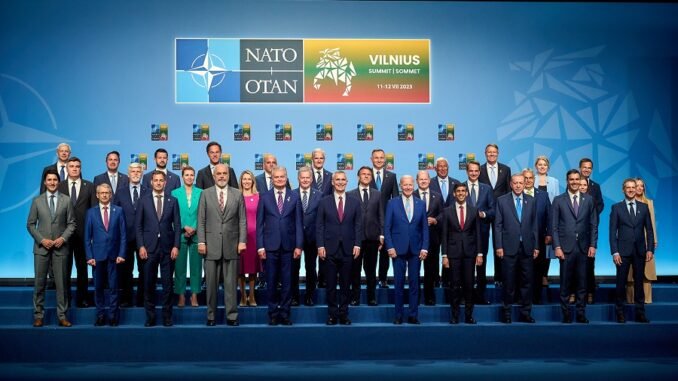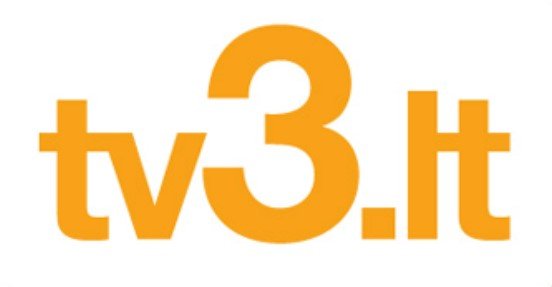
The NATO summit in Lithuania started on a positive note – that Turkey will not oppose Sweden’s accession to the Alliance – but other issues were more difficult to negotiate. However, on Tuesday evening, NATO Secretary General Jens Stoltenberg announced that member states have agreed that Ukraine will be invited to join NATO when conditions allow and with the support of allies but will no longer need to seek a membership roadmap, Eglė Samoškaitė is writing at the tv3.lt news portal.
This is not the wording that Ukraine and its President Volodymyr Zelensky, who has arrived in Lithuania and will attend the inaugural meeting of the NATO-Ukraine Council on Wednesday, had expected. On Tuesday, Mr Zelensky posted a strong opinion on Twitter that NATO countries are not providing any clarity in terms of timing, either on Ukraine’s invitation to membership or on membership itself. He called this situation absurd and particularly criticised the term “conditions”.
“Since the Madrid Summit last year, NATO allies have provided unprecedented support to Ukraine, a lot of ammunition, a lot of modern weaponry and training for the Ukrainian armed forces. Today, the Allies agreed on a three-pronged package to bring Ukraine closer to NATO. First, a new multi-year support programme for Ukraine was approved to ensure the transition from the Soviet era to NATO standards, training and doctrine, as well as to rebuild Ukraine’s security and defence sector and provide the country with essentials such as fuel, weapons and medical supplies,” Stoltenberg said.
“Second, a new NATO-Ukraine Council will be established for crisis, consultation and decision-making, where we will meet as equal partners. Tomorrow we will have the inaugural meeting of the Council with President Zelensky. Thirdly, we have confirmed that Ukraine will become a member of NATO, and we have agreed to abandon the Membership Action Plan. This will change Ukraine’s membership path from a two-step process to a one-step process. We have also made it clear that we will invite Ukraine to join NATO when the Allies agree and when the conditions are right,” the Secretary-General added.
Stoltenberg says this is a very strong package of solutions for Ukraine and a clear path to membership, although the official document does not name the conditions under which Ukraine could be invited to join NATO.
Asked what he could say to the disappointed Ukrainians, the NATO Secretary General reiterated that the Allies had sent a positive and united message to Ukraine about continued support and the path to future NATO membership. Mr Stoltenberg noted that NATO Allies are providing Ukraine with a great deal of military support and will continue to do so in the future.
“One of the most urgent tasks at the moment is for Ukraine to survive because if it does not, there is no need to discuss any membership at all”, the Secretary-General said.
Asked by a Ukrainian journalist what he meant by the right conditions for Ukraine to become a member of NATO, Stoltenberg did not give a straight answer but repeated the three-pronged package of solutions that should bring Ukraine closer to the Alliance. Another journalist asked the Secretary-General to comment on Mr Zelensky’s words that it would be absurd if there were no specific deadline for inviting Ukraine. However, Mr Stoltenberg reiterated the package of solutions that will bring the country closer to NATO and increase interoperability between Ukraine and the armed forces of the Alliance.
“We are also sending a strong political message through the vocabulary of membership, which is now already described in the Invitation Communication. There has never been a stronger message from NATO, both in terms of the political message on the path to membership and in terms of concrete support from NATO allies – military and practical support to ensure full interoperability,” Stoltenberg said.
At the Vilnius Summit, leaders also endorsed 3 regional defence plans: one covering the North Atlantic and the European Arctic, one covering the Baltic region and Central Europe, and one covering the Mediterranean and Black Seas. Some 300,000 troops, including air and naval forces, are assigned to these plans.
Finally, Vilnius confirmed that the Member States should spend at least 2% of their Gross Domestic Product on defence, although only 11 of the 31 Member States exceed this threshold in 2023. This is described as a long-term commitment, but there is no indication of the timeframe for achieving it: it simply says that the number of such allies is expected to increase substantially in 2024.
NATO leaders have also spoken out on China. According to Mr Stoltenberg, China is not an adversary of NATO and can therefore continue to cooperate with it, but it is pointed out that Beijing’s harsh policies are, in some cases affecting the security of the Alliance. For example, China is challenging the international order, refusing to condemn Russia’s war against Ukraine, threatening Taiwan and asserting itself militarily. Mr Stoltenberg says that China’s modernisation of its nuclear weapons is unprecedented in its speed and scope and that it is being carried out in an opaque manner.


Be the first to comment